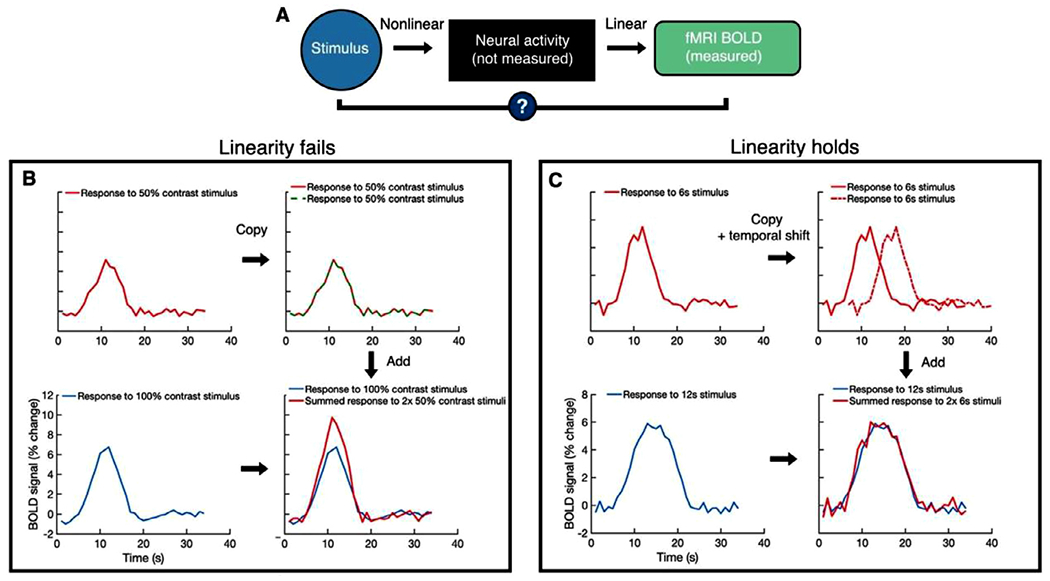Fig. 2.

Testing the linear transform model of the fMRI response. (A) Neural activity tends to be a nonlinear function of the stimulus. The linear transform model tests whether the fMRI response is a linear function of neural activity. (B) Although the fMRI response monotonically increases with stimulus contrast, additivity fails. The summed fMRI response to 2 × 50% contrast stimuli is smaller than the response to 1 × 100% contrast stimulus. This is presumed to be due to non-linearities in the stimulus-to-neural transform. (C) The fMRI response obeys temporal additivity; the summed fMRI response to 2 × 6s stimuli shifted in time is similar to the response of 1 × 12s stimulus. Here, the neural response to the second 6 s period is assumed to be similar to the neural response to the first 6 s period. Note that BOLD signal in (B) and (C) is simulated.
